Kristine Hughes's Blog, page 135
December 6, 2011
National Trust Holiday Lets
If one can't be home for Christmas, the next best place is an historic property let through the National Trust. At the National Trust Holiday Cottages website, you'll find a unique collection of over 370 properties in outstanding locations in England, Wales and Northern Ireland, available for short breaks, weekends away and holiday lets. Here are just a few:
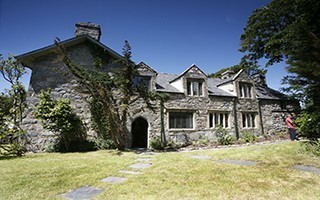
On the sandy coast between Barmouth and Harlech in Wales, Egryn is a stunning Grade II listed medieval hall house dating from 1510, with 17th century alterations and a mid 19th-century front which looks across farmland to Cardigan Bay. At the heart of the house is the medieval hall with exposed, partially-aisled roof structure and a grand 17th-century fireplace. It has been faithfully restored by the National Trust using traditional building techniques: admire the skill and beauty of this work, providing a rare opportunity to stay in a Welsh hall house of this calibre. It is furnished in keeping with each period of its development. Commissioned by the National Trust, a replica of the original Egryn table dating from the early 1700's has been made from local wind blown oak and the Trust's Ganllywd Estate, and now has pride of place in the grand medieval dining room. Egryn is a working farm, through which there is a public footpath which leads past a profusion of Scheduled Ancient Monuments and stretches from the seashore to the uplands of the Rhinogydd Range. It has a wealth of archaeological and historic interest. There is a large private garden with nature trees, shrubbery and patio area. With its grand medieval hall sitting and dining rooms, Victorian parlour, skilled craftsmanship, beautiful furnishings and large private garden, Egryn is the perfect choice for that special occasion, family holidays and get togethers.
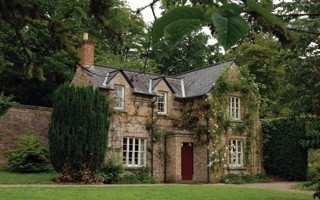
An exceptionally pretty cottage lying in the idyllic surroundings of the walled garden on the Florence Court estate, just eight miles from the town of Enniskillen. Rose Cottage is furnished to a high standard with views over the peaceful garden.
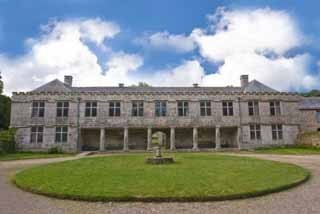
Godolphin House - Cornwall -This hugely atmospheric house sits in beautiful gardens and in great walking country. It is also only a short drive to lovely sandy beaches on both the north and south Cornish coasts, so makes a fabulous base for a great seaside holiday with a wonderful house to retreat to, away from the hustle and bustle of the resorts on busy days. The main entrance is via an imposing pillared portico running along the front of the house. There is a rear private garden area specifically for holiday cottage guests, but the main gardens are also available for use when not open to the public.
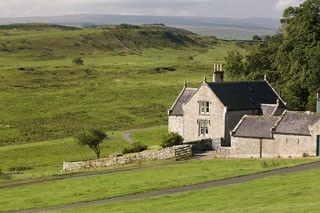
Housesteads - Northumberland - This Victorian farmhouse, built in the 19th century, was home to the Thompson's who farmed the area and also played a role as custodians of the Wall. The sitting room in the cottage was used by John Clayton when he was working on the excavation of Housesteads Fort. Clayton was the Town Clerk in Newcastle and was involved in the development of the city in the 1800's. He is renowned for his interest in preserving Hadrian's Wall and is credited with being the first person in the world to use his own wealth to buy sites of archaelogical interest. He bought land along the wall to stop the quarrying and removal of stones being taken to be used elsewhere. John Clayton was involved in excavations through out most of his life and was said to be still excavating up to the age of 94. The cottage is located just 100yrds from the ruins of Housesteads Fort and has outstanding views towards the North Pennines and Hadrian's Wall.
Ho, ho, ho, indeed.

On the sandy coast between Barmouth and Harlech in Wales, Egryn is a stunning Grade II listed medieval hall house dating from 1510, with 17th century alterations and a mid 19th-century front which looks across farmland to Cardigan Bay. At the heart of the house is the medieval hall with exposed, partially-aisled roof structure and a grand 17th-century fireplace. It has been faithfully restored by the National Trust using traditional building techniques: admire the skill and beauty of this work, providing a rare opportunity to stay in a Welsh hall house of this calibre. It is furnished in keeping with each period of its development. Commissioned by the National Trust, a replica of the original Egryn table dating from the early 1700's has been made from local wind blown oak and the Trust's Ganllywd Estate, and now has pride of place in the grand medieval dining room. Egryn is a working farm, through which there is a public footpath which leads past a profusion of Scheduled Ancient Monuments and stretches from the seashore to the uplands of the Rhinogydd Range. It has a wealth of archaeological and historic interest. There is a large private garden with nature trees, shrubbery and patio area. With its grand medieval hall sitting and dining rooms, Victorian parlour, skilled craftsmanship, beautiful furnishings and large private garden, Egryn is the perfect choice for that special occasion, family holidays and get togethers.

An exceptionally pretty cottage lying in the idyllic surroundings of the walled garden on the Florence Court estate, just eight miles from the town of Enniskillen. Rose Cottage is furnished to a high standard with views over the peaceful garden.

Godolphin House - Cornwall -This hugely atmospheric house sits in beautiful gardens and in great walking country. It is also only a short drive to lovely sandy beaches on both the north and south Cornish coasts, so makes a fabulous base for a great seaside holiday with a wonderful house to retreat to, away from the hustle and bustle of the resorts on busy days. The main entrance is via an imposing pillared portico running along the front of the house. There is a rear private garden area specifically for holiday cottage guests, but the main gardens are also available for use when not open to the public.

Housesteads - Northumberland - This Victorian farmhouse, built in the 19th century, was home to the Thompson's who farmed the area and also played a role as custodians of the Wall. The sitting room in the cottage was used by John Clayton when he was working on the excavation of Housesteads Fort. Clayton was the Town Clerk in Newcastle and was involved in the development of the city in the 1800's. He is renowned for his interest in preserving Hadrian's Wall and is credited with being the first person in the world to use his own wealth to buy sites of archaelogical interest. He bought land along the wall to stop the quarrying and removal of stones being taken to be used elsewhere. John Clayton was involved in excavations through out most of his life and was said to be still excavating up to the age of 94. The cottage is located just 100yrds from the ruins of Housesteads Fort and has outstanding views towards the North Pennines and Hadrian's Wall.
Ho, ho, ho, indeed.
Published on December 06, 2011 00:27
December 4, 2011
Downton Abbey… Upstairs, Downstairs and/or Brideshead Revisited Redux? A Personal Opinion
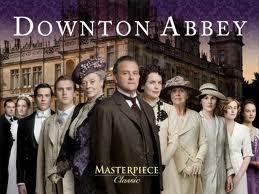
It's Ba-a-a-aa-aack!
PBS is re-running the first episodes of Downton Abbey in December 2011, as a prelude to showing the latest season, seen in the UK last fall. I expect a big fuss on many loops and blogs as again we re-hash our opinions -- both positive and negative -- on the show.
Our frequent guest blogger, Jo Manning, was in England to see season two -- and here is her view of the new episodes.
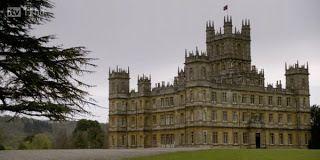
Downton Abbey… Upstairs, Downstairs and/or Brideshead Revisited Redux? A Personal Opinionby Jo Manning
As I put fingers to computer keyboard, I am reminded of that line in the vice-presidential debate in 1988 between Texas Senator Lloyd Bentsen and Indiana Senator Dan Quayle, where Quayle kept making references to himself as a new Jack Kennedy. Bentsen delivered the scathing putdown: "Senator, I served with Jack Kennedy, I knew Jack Kennedy, Jack Kennedy was a friend of mine. Senator, you're no Jack Kennedy." In relation to this 2011 ITV mini-series, Downton Abbey, I am moved to paraphrase that excoriating putdown: "ITV, writer Julian Fellowes, the cast of Downton Abbey, I watched Upstairs, Downstairs and Brideshead Revisited devotedly, and many, many times. Gentlemen, ladies, you are neither of those truly wonderful productions, not by a very long shot." I would add, "You are absurd and unrealistic, for starters!"
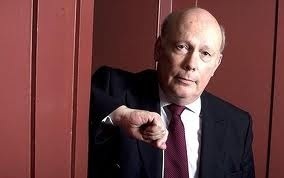
I saw the second episode of this series – which had begun with the repercussions of the sinking of the Titanic upon the fortunes of a wealthy earl – the Earl of Grantham -- and his family – an American-born heiress wife and three daughters – with my daughter in West London. She'd warned me, "You have to see this to believe it." She was correct. We could not stop laughing at the terribly clichéd plot, the wooden acting, the stereotyped characters, and the overall, well, yes, the overall silliness of this production. And I'm not talking de gustibus...here; this is more than a mere matter of taste.But the amazing – and, truly, unbelievable aspect – of this venture is that most people – especially those Anglophiles in the United States – ADORE IT! It has received awards, including prestigious US Emmys for outstanding t.v. mini-series/movie, for writing, for directing, and for the incomparable Maggie Smith in the supporting actress category. Smith is the only palpable reason for watching this awful production; her chewing up and spitting out the scenery is a highly seasoned tour de force, simply delicious. (The mini-series also won for cinematography and costumes at the Creative Arts Emmys.)
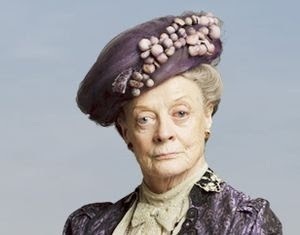
How did it happen that it beat out Pillars Of The Earth, for heaven's sake, a magnificently produced mini-series with outstanding acting that was based on Ken Follett's popular novel? It has to be Anglophilia, simply that.And the awards did not stop there. Downton Abbey entered the Guinness Book of World Record as "the most critically acclaimed television show" of the year. (Brideshead Revisited garnered this honor in 1981 for the original t.v. series.) Well, no one was polling a certain family in West London, for sure!To compound this unbelievable love-fest, ITV confirmed in November that a third series has been commissioned and will air beginning in September 2012. Truly, I am gobsmacked L
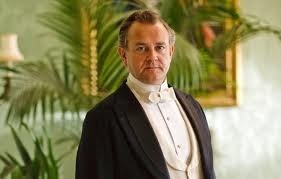
Where do I start, not wanting to give away what happens in the second series… Well, there's Hugh Bonneville – never the most accomplished of actors -- as the Earl of Grantham, who acts as if he has an iron rod up his bum and whose monologues to the servants and others are stunningly stupid; Lady Mary, his eldest daughter, played by Michelle Dockery – whose acting gamut runs from A to D, arrogance to disdain -- gives us no reason whatsoever to sympathize with her plight as the eldest-daughter-who-has-to-marry-well. She has obviously matriculated from the same acting school as Mr Bonneville. Chemistry between Lady Mary and anyone simply does not exist. She is a cold fish, with nothing lovable about her; the idea that she would fall into bed with a young handsome Turk she has only just met is totally off the wall. And, too, chemistry is also sadly lacking between the youngest (and wannabe social activist daughter) and the Irish chauffeur. Their "attraction" is excruciating, painful, non-existent.
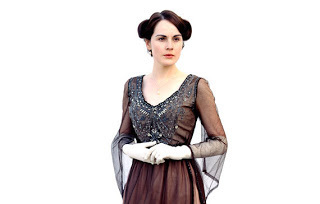
Poor, still beautiful Elizabeth McGovern is the Earl's rich American wife... She used to be a pretty good actress – remember how exquisite she was when only a teenager, in Ordinary People? -- but the dialogue coming out of her mouth lays her low. How does she not choke on it?
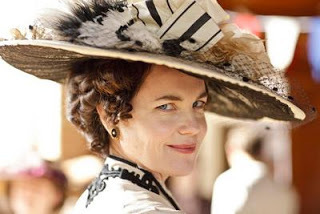
The servants also have their share of pretty awful characters. The butler, played by veteran character actor Jim Carter, has the same rod up his bum that the Earl of Grantham and Lady Mary strut around with, and don't get me started on the whiny, sycophantic valet! His performance…oh, gag me with a spoon!
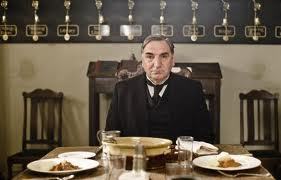
A major element of the first series was the problem with Lady Mary unable to inherit the earldom, since she is a woman, and male primogeniture prevails in England. (Recent events with the children of Prince William and Kate Middleton notwithstanding, as Downton Abbey is set in the first decades of the 20th century and the Earl and Countess of Grantham are not royals.) Fellowes has the aristos try to get this changed. Well – and Fellowes should be well aware of this, coming from the class he does – you cannot do this, the conditions of inherited titles being what they are. Everyone, then, would know it!
It is patently absurd that the earl and his family should try to buck this, but take a look at this link to an article by A.N. Wilson for a possible clue as to why this storyline might have so interested Julian Fellowes: http://www.dailymail.co.uk/debate/article-2037077/Downton-Abbeys-creator-Julian-Fellowes-biggest-snob-Britain.html It is all about how Fellowes is enraged that his wife cannot inherit a title.
The piece is scorching. As well it should be. Do note this comment of A.N. Wilson, too, which echoes exactly what I have been saying:
"Fellowes is an absurd, rather than malign, figure in our public life, so one would not wish to respond to this latest bid for publicity with too much of a po-face. I acknowledge I'm in a minority when it comes to Downton Abbey, and that most of the nation will be gripped by the new series of this unrealistic depiction of upper-class life in the old days."
For those who've not come across this expression, po-faced translates as humorless or disapproving. A.N. Wilson is an outspoken journalist and commentator and a prolific writer of fictional and biographical works. Look him up in WorldCat: http://worldcat.org/identities/lccn-n77-3675. Will not go into the editing problems, the telephone poles in the village, etc. That is sloppy film editing, nothing to do with the problems with Fellowes' writing and the lousy acting that prevails. (Still cannot believe he got an Oscar for Gosford Park, an entertaining film with several great moments… It could be his one shining moment, though; so much else that he has done is so bad.)
When Anglophiles who love good English drama of the sort carried by PBS's Masterpiece Theatre can anticipate with so very little difficulty the next line coming out of a character's mouth, that's…not good. As a comedy, Downton Abbey succeeds beautifully; as a drama, it is embarrassing. Drama should surprise us, enlighten us, and make us ponder possibilities, not bore us to death, in my opinion.
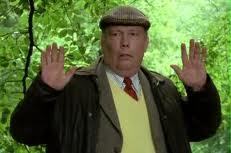
Really, need anyone say more?
Well, yes. From a Daily Mail article – and, spoiler alert! – don't click on this link unless you desperately do want to know – despite my caveats -- what happens in Series Two:http://www.dailymail.co.uk/femail/article-2058390/Downton-Abbey-The-plots-barmy-weve-loved-minute.html#ixzz1duEueO1v:
" 'I know it's a cliché,' he cried at one point, shouting to be hear over the thundering 'background' music and Lady Mary doing her special blinking vole look.
"Cliché? That hasn't stopped Fellowes before, we bellowed back.
"Oh dear. It's terrible. It's wonderful. It's a disaster. It's terrific. And without our Downton fix, what are we going to do to amuse ourselves on Sunday nights now?"
[Oh, be still my heart… "Lady Mary doing her special blinking vole look." Perfect, just perfect! Could not have put it more perfectly myself J]
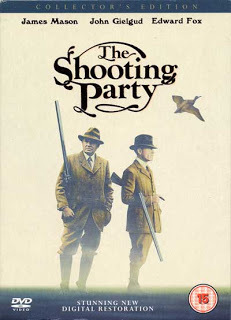
Well, here's a thought… Go out and rent the wonderful film of the Isabel Colegate book, The Shooting Party. The book was published in 1980; the film was released in 1985. It is the real thing…English aristocrats seeing the ebbing of the world they knew, on the eve of the First World War, and they are both works of art, the book and the movie. Yes, really, they are genuinely works of art, not trumped up absurdities.
But did you know he was an actor before turning to writing? Not a terribly successful actor. Probably his most memorable role was as the overweight, annoying neighbor who tries to win the widowed Susan Hampshire's heart in the television sitcom Monarch Of The Glen. Yes, that was Fellowes: Kilwillie!
From the IMDB website, http://www.imdb.com/title/tt0088111/ :
"Autumn, 1913: on the eve of the Great War, a small party of lords and ladies gather at the Hertfordshire estate of Sir Randolph Nettleby. A code of propriety governs all: dress, breakfast, relations with the estate's peasants, courtship, shooting, adultery. Lionel Stephens, who is courting Sir Randolph's daughter, gets into a shooting competition with Lord Gilbert Hartlip; Lord Gilbert's wife carries on discreet affairs; a pamphleteer circles the estate calling for no more killing, and Sir Robert's grandson hopes to protect a wild duck he's befriended. A way of life is ending: Lord Gilbert's violation of the gentlemen's code suggests internal rot as the real world presses in."

James Mason gives the performance of his acting career as Sir Randolph Nettleby, who hosts what will probably be the last gathering of his aristocratic family and friends as the world prepares to blow asunder. The cast of The Shooting Party is superb, absolutely first-rate – John Gielgud, James Fox, Robert Hardy, Cheryl Crawford, Gordon Jackson, Dorothy Tutin, to name only a few -- and the story bittersweet and memorable. No posturing, no bombast, no nonsensical plotting, and, best of all, that Julian Fellowes fellow had nothing whatsoever to do with it.
Thanks, Jo, for your uninhibited opinions and your suggestion of The Shooting Party. We invite our readers' opinons too -- please comment on your views of Downtown Abbey. Do you love it -- or were you disappointed? Come one, come all! We want to hear from you.
Published on December 04, 2011 00:00
December 2, 2011
Florizel and Perdita met on December 3, 1779
George Prince of Wales was only 17 years old when he attended a performance of Florizel and Perdita, a play adapted from Shakespeare's A Winter's Tale. In the words of actress Mary Robinson's biographer, Hester Davenport, the Prince "was looking for a woman to worship," perhaps HAD been looking already, when he sat in his box at the Theatre Royal, Drury Lane and "fell in love."
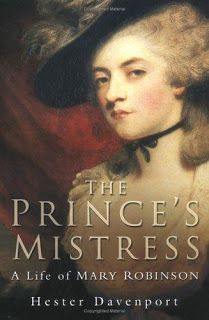
As Ms. Davenport points out, this was not Shakespeare's Winter's Tale but an adaptation by David Garrick, known as Florizel and Perdita, in which Perdita is a sweet and charming maiden. The Prince sent Mary notes addressed to Perdita and signed Florizel, as though they were the characters in the play. So began his first publicly known affair, the first of many. MANY.
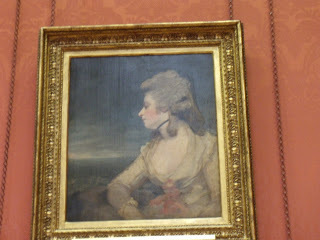
Mary was born Mary Darby in Bristol in November of 1757or perhaps 1758, which made her about a few years older than the prince (b. 1762). Her "disastrous" marriage at age 16 to Thomas Robinson brought her a daughter, Maria Elizabeth (b. 1774), but little financial or emotional support. Eventually she began to perform on the London stage, often in "trouser roles," playing young men and displaying her fine figure for all to admire.
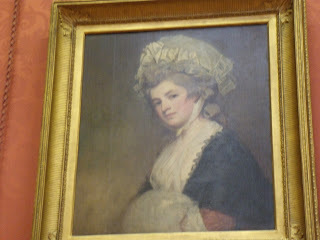
Though Prince Geroge did not remain faithful to her for long, she was known as Perdita all her life. While she enjoyed his attentions, she was the toast of London, extoled and excoriated in the newspapers, the object of considerable gossip in noble salons, especially by the males.
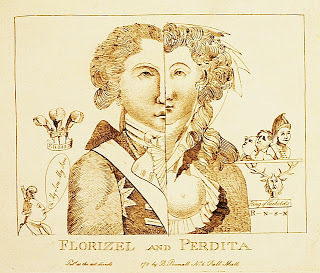
By the time this fanciful caricature was published in 1783, the relationship was "quite out of date." When the Prince quite publically took up with other females, Mary refused to send back all his letters and other tokens of his fickle adoration. Later she received a not-so-secret payment for returning some of them.
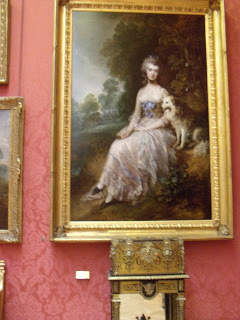
In 1781, Mary sat for a portrait by Thomas Gainsborough, commissioned by the Prince. In this version of the painting in the Wallace Collection (another is in the Royal Collection), Mary holds a miniature of the Prince in her right hand.
Mary had only a brief time in the limelight of the London demi-monde. Only a few year later, she was reported to be "desperately ill." Various explanations for her condition have been suggested, but the causes of her maladies remain mysterious. In May of 1791, she published a book of poems, "a small but handsomely bound volume with marbeled end paers," made possible by 600 subscribers, including the Prince of Wales, the Duke of York, the Duke of Clarence and many other luminaries.
In 2010, Kristine and Victoria, along with Kristine's daughter Brooke, visited with Hester Davenport in Windsior, here at the Castle.
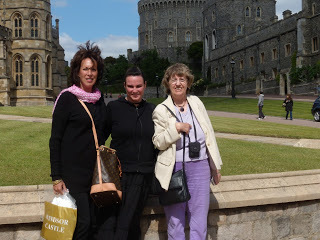
Hester Davenport chronicles the reception Mary's book received. Readers seems to ask, "How was it possible to connect the frivolous woman of 1780s gossip with a writer of pensive odes, elegies and sonnets?...that she acquired the title 'The English Sappho', possibly at her own instigation, may have added to the this (seductive) sense of being wooed."
Hester took us to visit the burial site of Mary Robinson in Old Windsor.
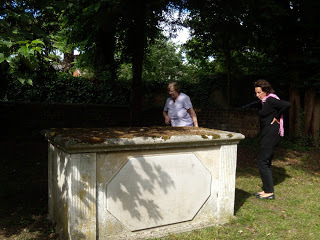
Mary lived only a few more years, dying in 1800 never having recovered her health. She had, however, continued to write poetry as well as her memoirs, several novels, plays and feminst essays.
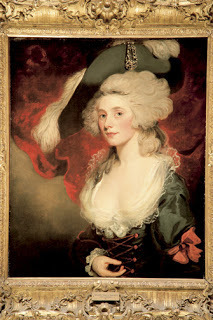
As an endorsement of the value of her literary work, the painting of Mary Robinson by Hopper was acquired for the Chawton House Library where it is displayed prominently. Many works by Mary Robinson are available from their website. Her biography is here.
We all hope that future scholars will pay attention to this fascinating woman and her body of work. In the epilogue of her biography, Hester Davnport writes, "Mary Robinson was dead: the talented actress, spectacular Cyprian, accomplished and industrious author, committed feminist and radical, charming and witty hostess, spendthrift, devoted daughter and mother, compassionate, sensitive and sometimes spikily difficult woman. A genius? Perhaps only in her extraordinary versatility, but not undeserving of the 'One little laurel wreath,' she craved."
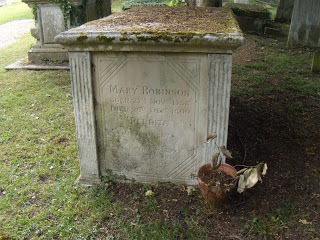
Mary Darby Robinson (1758? - 1800)


As Ms. Davenport points out, this was not Shakespeare's Winter's Tale but an adaptation by David Garrick, known as Florizel and Perdita, in which Perdita is a sweet and charming maiden. The Prince sent Mary notes addressed to Perdita and signed Florizel, as though they were the characters in the play. So began his first publicly known affair, the first of many. MANY.

Mary was born Mary Darby in Bristol in November of 1757or perhaps 1758, which made her about a few years older than the prince (b. 1762). Her "disastrous" marriage at age 16 to Thomas Robinson brought her a daughter, Maria Elizabeth (b. 1774), but little financial or emotional support. Eventually she began to perform on the London stage, often in "trouser roles," playing young men and displaying her fine figure for all to admire.

Though Prince Geroge did not remain faithful to her for long, she was known as Perdita all her life. While she enjoyed his attentions, she was the toast of London, extoled and excoriated in the newspapers, the object of considerable gossip in noble salons, especially by the males.

By the time this fanciful caricature was published in 1783, the relationship was "quite out of date." When the Prince quite publically took up with other females, Mary refused to send back all his letters and other tokens of his fickle adoration. Later she received a not-so-secret payment for returning some of them.

In 1781, Mary sat for a portrait by Thomas Gainsborough, commissioned by the Prince. In this version of the painting in the Wallace Collection (another is in the Royal Collection), Mary holds a miniature of the Prince in her right hand.
Mary had only a brief time in the limelight of the London demi-monde. Only a few year later, she was reported to be "desperately ill." Various explanations for her condition have been suggested, but the causes of her maladies remain mysterious. In May of 1791, she published a book of poems, "a small but handsomely bound volume with marbeled end paers," made possible by 600 subscribers, including the Prince of Wales, the Duke of York, the Duke of Clarence and many other luminaries.
In 2010, Kristine and Victoria, along with Kristine's daughter Brooke, visited with Hester Davenport in Windsior, here at the Castle.

Hester Davenport chronicles the reception Mary's book received. Readers seems to ask, "How was it possible to connect the frivolous woman of 1780s gossip with a writer of pensive odes, elegies and sonnets?...that she acquired the title 'The English Sappho', possibly at her own instigation, may have added to the this (seductive) sense of being wooed."
Hester took us to visit the burial site of Mary Robinson in Old Windsor.

Mary lived only a few more years, dying in 1800 never having recovered her health. She had, however, continued to write poetry as well as her memoirs, several novels, plays and feminst essays.

As an endorsement of the value of her literary work, the painting of Mary Robinson by Hopper was acquired for the Chawton House Library where it is displayed prominently. Many works by Mary Robinson are available from their website. Her biography is here.
We all hope that future scholars will pay attention to this fascinating woman and her body of work. In the epilogue of her biography, Hester Davnport writes, "Mary Robinson was dead: the talented actress, spectacular Cyprian, accomplished and industrious author, committed feminist and radical, charming and witty hostess, spendthrift, devoted daughter and mother, compassionate, sensitive and sometimes spikily difficult woman. A genius? Perhaps only in her extraordinary versatility, but not undeserving of the 'One little laurel wreath,' she craved."

Mary Darby Robinson (1758? - 1800)
Published on December 02, 2011 01:00
November 30, 2011
That Woman is Coming to the US
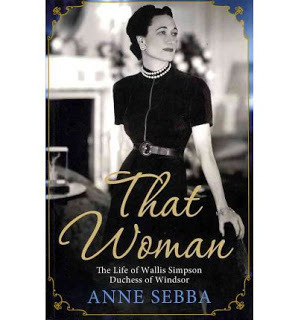
I wonder how many of us can add a guilty fascination with Wallis Simpson to our list of insignificant transgressions? Admire her or hate her, she remains one of those figures who continues to fascinate. Last summer, Wiedenfeld & Nicolson published That Woman by Anne Sebba in the UK -- and it will be out in March 2012 in the US from St. Martin's. The New York Times recently carried an article about the book, which is here.
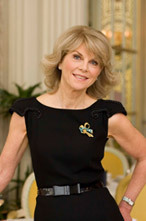
Above, Anne Sebba, author of That Woman. Sebba is a lecturer and tv presenter as well as the author of a number of books. According to her website (here), she particularly likes to write about strong women. Other subjects she has written of include such disparate personages as Jennie Jerome Churchill, Mother Teresa, and Laura Ashley. Of course, the most scandalous aspect of the Duchess of Windsor book was eagerly received by newspapers. Here is an article from the Daily Mail.
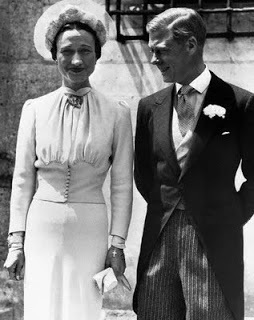
Above, the wedding, in 1937, in France. Bessie Wallis Warfield was born in Pennsylvania in 1896. The story of how she became the woman who made a king abdicate, one of the most hated women ever, yet a style trend setter and source of endless public attention has been told over and over. Nevertheless, it will be told many more times I am sure.
In many ways, I think the Duke and Duchess led a lonely life of wandering, early in their marriage accused (with some justification it seems) of being Nazi sympathizers, and later of being only too eager to accept whatever largesse came their way from social climbers, publicity seeking hangs-on, and celebrity wannabes.
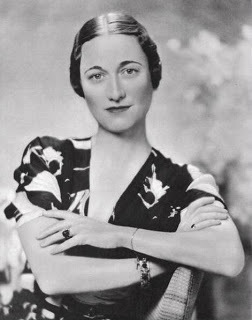
The Duke had a lifelong obsession with the fact his wife could not be correctly addressed as Her
Royal Highness, and he insisted on everyone calling her by that title -- which to me would only have made it worse, as every time she heard it, the phrase must have grated. She was known for some witty phrases -- "a woman can never be too rich or too thin." Her clothing and jewels were much admired.
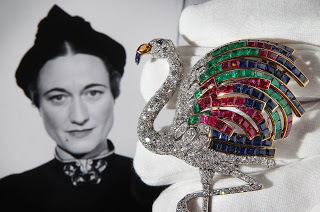
The famous jeweled flamingo clip, above in an auction promotional shot, was sold for a record price. It was made by Cartier in 1940 -- costume jewelry replicas are not hard to find.
Madonna's film about That Woman -- titled W.E. -- is set to open in February in the U.S. It got some good reviews from film festivals. And the trailer, below, looks interesting.
http://www.imdb.com/title/tt1536048/
In the meantime, while we wait for the book That Woman and the movie W.E., you might take a look at the 1978 television series Edward and Mrs. Simpson, which I recall with pleasure. Though just how guilty a pleasure it was, I shall have to reassess!
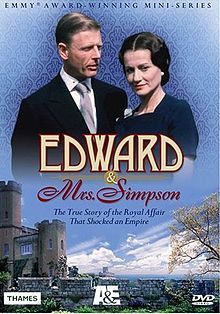
It originally ran in seven parts, and it starred Edward Fox as Edward and Cynthia Harris as Wallis. Just the thing for an evening when the snow begins to fall and you have a nice bowl of popcorn on hand. Or make that a couple of evenings!
Like the topic of the late Diana, Princess of Wales, the story has everything -- romance, scandal, royalty, and a dysfunctional family. What more could we ask?
Published on November 30, 2011 01:00
November 28, 2011
Save The Cleveland Street Workhouse - An Update
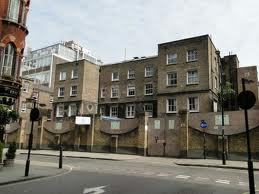
You may recall that we ran a post a few months back asking for your support in saving the Cleveland Street Workhouse in London, which has connections to Charles Dickens.
The Cleveland Street workhouse was originally built in 1775 and it is the best preserved Georgian era workhouse in Central London, one of only three remaining in the Capital. Here is the latest update on the status of the project:
Thank you for continuing to support our campaign to save the Cleveland Street
Workhouse. Your signature, together with nearly 6000 others, was vital in our
effort of obtaining listed status for the workhouse. As you will hopefully be
aware, the workhouse was granted Grade II listed status by the Secretary of
State in March 2011, however it has come to our attention that the building may
again be under threat. We are therefore asking for your help once again.
University College London NHS Foundation Trust recently decided to evict the
current guardians of the site, leaving the building exposed to possible further
decay, speeding up its demise. With the recent spate of squatting in the area,
our group is also concerned that squatters may take over the building and damage
it, further exacerbating the situation.
The Cleveland Street Workhouse has served as short term accommodation for young
professionals for more than 3 years. The inhabitants have been placed within the
building through a "Protection by Occupation" scheme, which forbids squatters
from occupying the premises and helps prevent decay. Without constant monitoring
and heating during the winter months, the elements will take their toll.
In light of these potentially disastrous developments, we would like to call
upon UCLH NHS Foundation Trust to reconsider this decision.
If you could take a moment of your time to write to the University College
London Hospital Trust expressing your concern about recent developments, you
would once again provide invaluable help to preserve the building. Due to the
urgent nature of the situation, please address your correspondence direct to
UCLH NHS Foundation Trust's CEO:
Sir Robert Naylor
Chief Executive
UCLH NHS Foundation Trust
235 Euston Road
London NW1 2BU
e-mail: robert.naylor@uclh.nhs.uk
For more information, please visit The Cleveland Street Workhouse website.
Published on November 28, 2011 00:07
November 26, 2011
A Letter From the Duke of Rutland
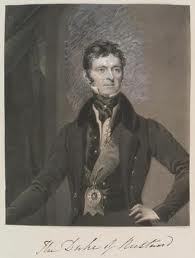 John Henry Manners, 5th Duke of Rutland
John Henry Manners, 5th Duke of RutlandFrom the Duke of Rutland to Lady Shelley
Belvoir Castle, November 26, 1825.
My Dear Lady Shelley,
"So, at length you have deigned to notice me, and to remember that you had such a friend in existence! I know not how many months it is since I wrote my last letter to you; and I was trying to recollect whether it contained aught which could have affronted you, when your letter arrived to dispel all sombre suppositions from my mind, and to revivify me again with the cheering ray of your kind friendship, on which, believe me, I place a value of high (I may say highest) degree. At one time I thought you was treating me as you did at Burlington House, completely as a faute de mieux fellow; and that you was engaged in a more agreeable correspondence, perhaps with the very Duke who, on the occasion alluded to, drove me to the wall. Several times have I nearly been writing to you; but I have restrained myself, from the practice which I have of writing to you, Mrs. Fox, and a few other such highflown dames of fashion, only when I have received a letter from you. 1 do this from the idea that, till you write, you do not wish to hear from me. . . . You will hear from Shelley of all that passed during October. We were very merry at Cheveley. But to myself it was a most disastrous month, as far as gambling was concerned. I lost nothing terrifick on the turf; but the whist table really persecuted me! I shall be like Shelley, and give it up; at least all future high play. I mean to reduce my stake one-half, and my resolution is so fixed that I feel confident that it will not give way. ... It is a sin that you should have Mazeppa (a horse) in your possession, and not bring him here to show his perfections to an admiring field! But Mazeppa goes out to a disadvantage under you, since he gets robbed of a considerable part of the admiration he would, under other circumstances (Jest a dire, under another person's pressure) attract. It is a case in which 'the horse and is rider' must share by tallies, in admiration and applause. I have an admirable set of horses if I had nerves and head to ride them. Yet I entertain no doubt that Mazeppa would show a brilliant gem among them. Charles Thornton was asking after him last night. He has a monstrous opinion of him.
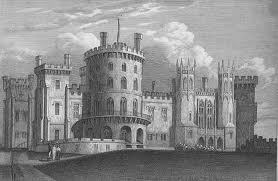 Belvoir Castle
Belvoir Castle"We are living entirely alone here; the Duchess has not been very well lately, and she wishes an interval of quiet, in order to recruit before the bustling time, a large society of Christmas, summon her to a re-exertion of strength. There is almost as much labour in directing the household concerns of a large party in a country house, as in guiding a hunter across a stony country in a mist. We have not yet allowed my two brothers (who are at Melton) to come to us. On December (?) I go to Beaudesert for a couple of days woodcock shooting, and when there I shall probably press forward for two nights to Willey. So you heard of the Anklet! We all agreed it was a beautiful, as well as a novel custom, and credit was given to the Columbus of it. It will very likely be the fashion next year in London, but there must be a curtailment of the flounces and furbelows, or it will be like the flower which springs to blush unseen. . . .
"You have my best wishes for your success in the important object relative to the diversion of the turnpike road. I can easily understand how great an improvement it will make to the comfort, the privacy, and the actual appearance of Maresfield. Nothing will give me greater pleasure than to visit you there; but I do not look so much to the pleasure of seeing the place, as of seeing its owner, and I beg that the success of your turnpike road diversion may not be the sine qua non of our visit to Maresfield! I trust that I shall also be able to congratulate you on the realisation of your golden dreams respecting the union of the Medway and the Ouse, and the consequent improvement in value of your property. Besides being an important object to you it would be a most important one to the country, for the causes which you ave detailed. Our lake here is just completed, and the water turned into it for a perpetuity a fortnight ago. It has all the effect which we wished, and expected, and does the Duchess's conception and planning the highest credit. We are busily engaged in fitting up the large drawing-room, which I really think will be the handsomest room in the kingdom, as well as unique in its design. Twenty gilders are at this instant busily occupied at Knipton Lodge in preparing the parquets from Madame de Maintenon's apartment in the Trianon, which are to form the fittings of the room, and they are superb. Our object was to have the room completed by New Year's Day; but it is impossible.
Ever truly and affectionately yours,
Rutland
Published on November 26, 2011 00:18
November 24, 2011
Christmas Ideas from the National Trust
When you are making up your Christmas list for yourself or for lucky giftees, you might want to take a look at the National Trust's gift shop.
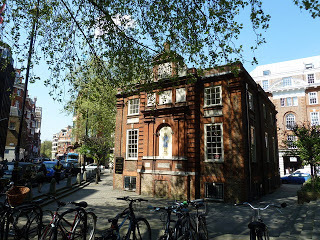
The historic Blewcoat School on Caxton Street in London is a to-die-for shop you won't want to miss next time you are in London. But if you can't quite make it to London this holiday season, shop on line here. There is something for everyone.

If you live in the US and travel to Britain, you should join the Royal Oak, the US support group for the National Trust. It will give you free admission to Trust properties, newsletters and magazines from both organizations, discounts on purchases, and a great deal of satisfaction. I have often shown my Royal Oak membership card at a Trust stately home and received a big cheer from the volunteers. "We love our Royal Oak members," they always say. Additional perks are invitations to special programs in major US cities by traveling lecturers and authors sponsored by the Trust and the Royal Oak -- and some travel tours that sound brilliant. Or if you are in Britain or elsewhere, join the Trust. And memberships make great gifts too.
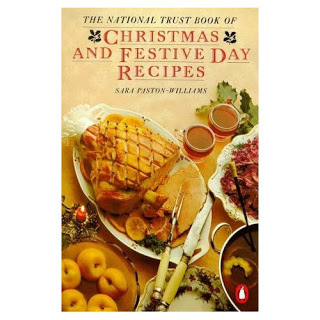 As you will see on their website, the Trust's shops have a wide variety of books. The Christmas recipe collection above is on my list, for sure.
As you will see on their website, the Trust's shops have a wide variety of books. The Christmas recipe collection above is on my list, for sure.
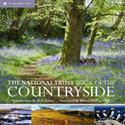
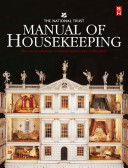 A few more selections... of 100's.
A few more selections... of 100's.
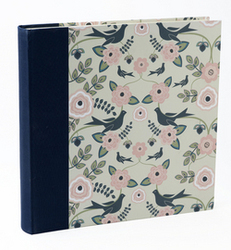 Or you could choose a photo album and fill it with your own snapshots.
Or you could choose a photo album and fill it with your own snapshots.
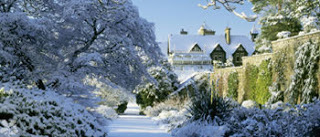
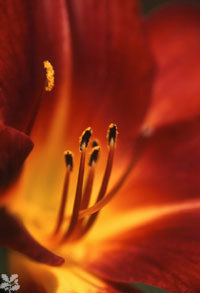
As seen in the examples above, the Trust sells magnificent prints, many by renowned photographers, suitable for framing.
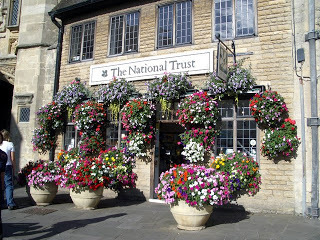
The National Trust runs many shops both in cities and on their properties. They are always good for a browse.
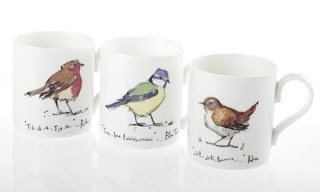
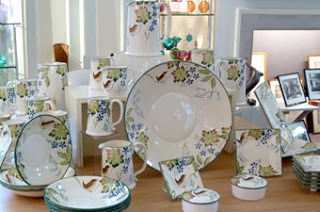
Many popular items such as ceramic mugs and pieces of china compete with wonderful lotions and soaps, silk scarves and shawls, umbrellas and even hiking shoes. Here are two more books I covet:
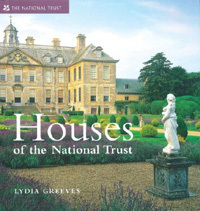
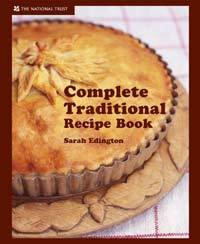
Could someone please contact Santa and give him my list?

Photos from the National Trust.

The historic Blewcoat School on Caxton Street in London is a to-die-for shop you won't want to miss next time you are in London. But if you can't quite make it to London this holiday season, shop on line here. There is something for everyone.

If you live in the US and travel to Britain, you should join the Royal Oak, the US support group for the National Trust. It will give you free admission to Trust properties, newsletters and magazines from both organizations, discounts on purchases, and a great deal of satisfaction. I have often shown my Royal Oak membership card at a Trust stately home and received a big cheer from the volunteers. "We love our Royal Oak members," they always say. Additional perks are invitations to special programs in major US cities by traveling lecturers and authors sponsored by the Trust and the Royal Oak -- and some travel tours that sound brilliant. Or if you are in Britain or elsewhere, join the Trust. And memberships make great gifts too.
 As you will see on their website, the Trust's shops have a wide variety of books. The Christmas recipe collection above is on my list, for sure.
As you will see on their website, the Trust's shops have a wide variety of books. The Christmas recipe collection above is on my list, for sure. 
 A few more selections... of 100's.
A few more selections... of 100's. Or you could choose a photo album and fill it with your own snapshots.
Or you could choose a photo album and fill it with your own snapshots.

As seen in the examples above, the Trust sells magnificent prints, many by renowned photographers, suitable for framing.

The National Trust runs many shops both in cities and on their properties. They are always good for a browse.


Many popular items such as ceramic mugs and pieces of china compete with wonderful lotions and soaps, silk scarves and shawls, umbrellas and even hiking shoes. Here are two more books I covet:


Could someone please contact Santa and give him my list?

Photos from the National Trust.
Published on November 24, 2011 02:00
November 22, 2011
London Advent Calendar
I am devoted to Jacquie Lawson animated e-cards, for almost any occasion. Jacquie (I feel like she is my friend!) has created two advent calendars to mark the 25 days leading up to Christmas 2011.
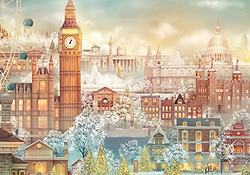
The panorama changes according to the time of day; London's night lights are particularly lovely. Each day there is a new scene or story to enchant you and kiddies of all ages. Also available is a Village Advent Calendar.
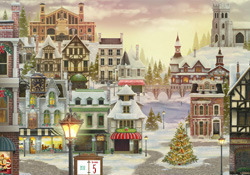
Colorful and musical, these calendars are as charming as the Jacquie Lawson cards. You really need to see the animations to get the full effect. See the website here.

Joining the website is not expensive and you will have many choices of Christmas, birthday, Easter, Valentine and other holiday cards -- British, Canadian and American. All are accompanied by delightful sound tracks.
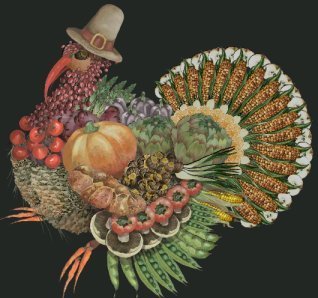
It is certainly not too late to send Thanksgiving cards, such as the above Turkey created from bunches of vegetables. Most of the cards can be sent almost instantaneously once you are registered, but obviously you have to take traffic into consideration for popular holidays.
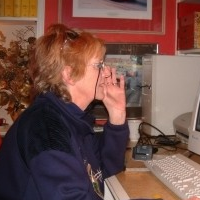
Jacquie Lawson, above, lives in the village of Lurgashall in West Sussex. She is a lady of a 'certain age' but has about the most youthful and creative mind I can imagine. According to the story -- nearly a legend by now -- she created an animated Christmas card and sent it to 30 friends about a dozen years ago. She got back thousands of responses -- for everyone had forwarded it to their entire e-address book. From this modest beginning, her business has become wildly successful, sending millions of cards each year on behalf of members.


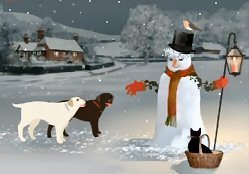

Among her most requested cards are those with her dog Chudleigh, a black lab, and his canine and feline friends. Some of the cards are done as Pelmanism puzzles, favorites of many in the younger set. You match pairs (as in the game Memory) and when you make a match, another section of the card is revealed.

Another favorite recurring figure is Teddy, who has many adventures indeed, and will bring greetings for almost any purpose -- or none but a cheery hello.

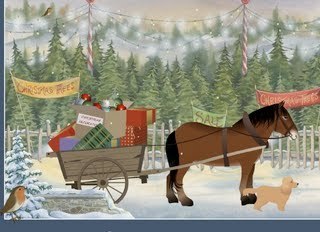
Returning to the holidays fast approaching, check out Jacquie's wonderful e-cards, screen-savers and note cards, just in case you still like to send actual paper cards, as I often do -- though not often enough.

And as the days darken ever earlier -- until the most welcome day of the year, the winter solstice -- keep your days bright and merry with Jacquie's creations.
Just so you know, this blog post is done unsolicited, without the knowledge of Jacqui Lawson -- just a hint about something we enjoy and you might too. Cheerio!



The panorama changes according to the time of day; London's night lights are particularly lovely. Each day there is a new scene or story to enchant you and kiddies of all ages. Also available is a Village Advent Calendar.

Colorful and musical, these calendars are as charming as the Jacquie Lawson cards. You really need to see the animations to get the full effect. See the website here.

Joining the website is not expensive and you will have many choices of Christmas, birthday, Easter, Valentine and other holiday cards -- British, Canadian and American. All are accompanied by delightful sound tracks.

It is certainly not too late to send Thanksgiving cards, such as the above Turkey created from bunches of vegetables. Most of the cards can be sent almost instantaneously once you are registered, but obviously you have to take traffic into consideration for popular holidays.

Jacquie Lawson, above, lives in the village of Lurgashall in West Sussex. She is a lady of a 'certain age' but has about the most youthful and creative mind I can imagine. According to the story -- nearly a legend by now -- she created an animated Christmas card and sent it to 30 friends about a dozen years ago. She got back thousands of responses -- for everyone had forwarded it to their entire e-address book. From this modest beginning, her business has become wildly successful, sending millions of cards each year on behalf of members.




Among her most requested cards are those with her dog Chudleigh, a black lab, and his canine and feline friends. Some of the cards are done as Pelmanism puzzles, favorites of many in the younger set. You match pairs (as in the game Memory) and when you make a match, another section of the card is revealed.

Another favorite recurring figure is Teddy, who has many adventures indeed, and will bring greetings for almost any purpose -- or none but a cheery hello.


Returning to the holidays fast approaching, check out Jacquie's wonderful e-cards, screen-savers and note cards, just in case you still like to send actual paper cards, as I often do -- though not often enough.

And as the days darken ever earlier -- until the most welcome day of the year, the winter solstice -- keep your days bright and merry with Jacquie's creations.
Just so you know, this blog post is done unsolicited, without the knowledge of Jacqui Lawson -- just a hint about something we enjoy and you might too. Cheerio!

Published on November 22, 2011 01:00
November 20, 2011
London Calling...
The New York Times book Review of Sunday, November 13, 2011, carried a review of a new book I need to add to my library: London Under: The Secret History Beneath the Streets by Peter Ackroyd.
To read the review, click here.
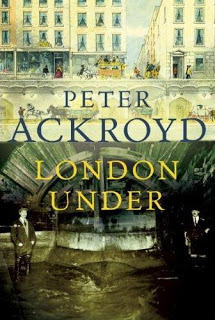
The book begins with a warning to tread carefully in the streets of London, for one is walking over the remains of tens of thousands over many centuries. It is no surprise to think of cities buried beneath us; that is true of many cities. But for London junkies like Kristine and Victoria, all other locations pale in comparison.

Author Peter Ackroyd (above, from The Guardian in 2008) has written dozens of books, many about London and its residents. One of my favorites is London: The Biography, published in 2000. Beginning with pre-history, Ackroyd brings London's story up to the Greater London of almost today, a metropolis that sprawls over a vast region. London Under tells about what is below, from the earliest races of human habitation along the river Thames to the constant expansion of the Underground, or as it is more affectionately known, the Tube. The chapter headings begin with "Darkness Visible" and run to "Deep Fantasies."
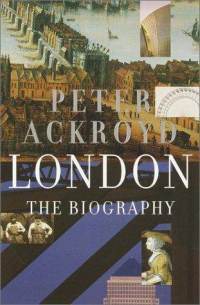
Ackroyd's biographies include such subjects as Chaucer, Shakespeare, William Blake, J.M.W. Turner, Charles Lamb, Charles Dickens, Oscar Wilde, T.S. Eliot, and Ezra Pound. Don't you wonder what he does in his spare time?
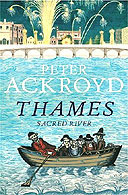
I seem to have missed Ackroyd's 2007 book Thames: Sacred River, a situation I will have to remedy soon. He has also written fiction, some sounding like fictional biography, a genre that has become increasingly popular lately.
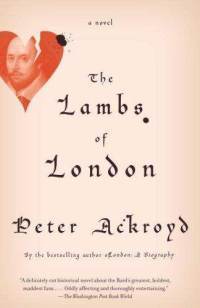
Above, the story of Charles Lamb, written as a novel, published in 2004. From what little I recall about Charles and his sister Mary, the truth is actually stranger than fiction. But the story of the pair no doubt makes for a dramatic account of interesting aspects of the regency era.
I guess I have set us up for a lot of reading in the near future. But as long as the topic is London, it is a labor of love. Thanks, Mr. Ackroyd!
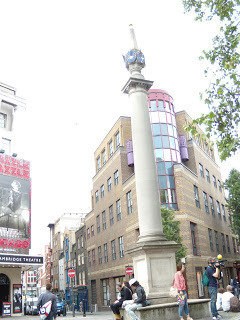
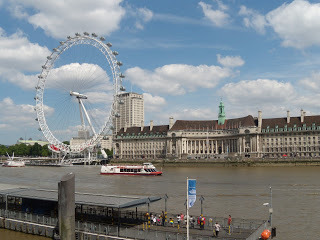
Above, my photos: Seven Dials, 2010; The London Eye from Parliament, also 2010.
To read the review, click here.

The book begins with a warning to tread carefully in the streets of London, for one is walking over the remains of tens of thousands over many centuries. It is no surprise to think of cities buried beneath us; that is true of many cities. But for London junkies like Kristine and Victoria, all other locations pale in comparison.

Author Peter Ackroyd (above, from The Guardian in 2008) has written dozens of books, many about London and its residents. One of my favorites is London: The Biography, published in 2000. Beginning with pre-history, Ackroyd brings London's story up to the Greater London of almost today, a metropolis that sprawls over a vast region. London Under tells about what is below, from the earliest races of human habitation along the river Thames to the constant expansion of the Underground, or as it is more affectionately known, the Tube. The chapter headings begin with "Darkness Visible" and run to "Deep Fantasies."

Ackroyd's biographies include such subjects as Chaucer, Shakespeare, William Blake, J.M.W. Turner, Charles Lamb, Charles Dickens, Oscar Wilde, T.S. Eliot, and Ezra Pound. Don't you wonder what he does in his spare time?

I seem to have missed Ackroyd's 2007 book Thames: Sacred River, a situation I will have to remedy soon. He has also written fiction, some sounding like fictional biography, a genre that has become increasingly popular lately.

Above, the story of Charles Lamb, written as a novel, published in 2004. From what little I recall about Charles and his sister Mary, the truth is actually stranger than fiction. But the story of the pair no doubt makes for a dramatic account of interesting aspects of the regency era.
I guess I have set us up for a lot of reading in the near future. But as long as the topic is London, it is a labor of love. Thanks, Mr. Ackroyd!


Above, my photos: Seven Dials, 2010; The London Eye from Parliament, also 2010.
Published on November 20, 2011 02:00
November 18, 2011
Visiting Country Houses: Harewood House
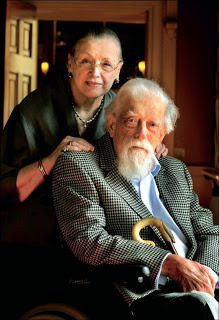
Victoria here. One of my all time favorite country houses to visit is Harewood House in Yorkshire. I was saddened last summer to learn of the death of the 7th Earl of Harewood, George Lascelles (1923-2011), a cousin of Queen Elizabeth II. He is pictured above with his second wife, Patricia, now the dowager Countess of Harewood.
The 8th earl, David Lascelles (b. 1950) is the eldest son by his first wife, the former Marion Stein. He seems to be continuing his father's dedication to making the estate an entertaining and educational asset to the area. Harewood House is a lively place, now open daily year around. For the website, click here. A full schedule of winter activities and special Christmas events make me wish I could go back frequently.
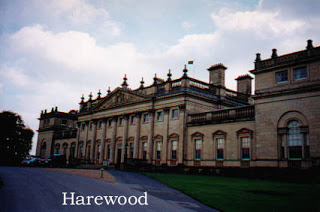
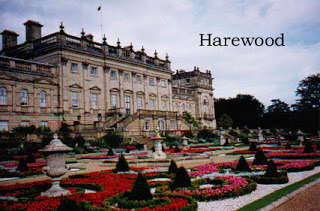
The house stands on a broad grassy hilltop. The north façade (top photo) is typically Palladian in its sober severity, though some alterations were made in the 1840's by Sir Charles Barry, architect of the Houses of Parliament. The south front now faces a terrace, designed by Barry, that reminds one of exactly the kinds of parterres Capability Brown destroyed in older houses. Here the Victorian Terrace replaces part of Brown's original grassy pasture, thought it also gives a great view of the Brown layout. Such is the pattern of action and reaction in design!
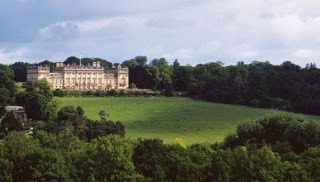
The remainders of the grounds are much as Brown designed them, beautiful rolling hills which earned the fabled landscape architect a fee of 6,000 pounds, a princely sum in the 18th century. The Lascelles family, which has old and deep Yorkshire roots, made a fortune from Barbados sugar plantations. Henry Lascelles (d.1752) purchased the Harewood property in 1738. His son Edwin Lascelles (1712-1795) was born in Barbados. He chose John Carr of York as architect, though some alterations were made by Robert Adam, who is responsible for the interior. Building on the house began in 1759 and it was completed in 1772.
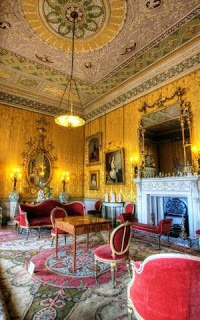
The Yellow Drawing room, above, is Adam at his peak. Much of the furniture was supplied by Chippendale, including the magnificent looking glasses. According to the House guidebook, Barry redecorated several rooms and removed the priceless mirrors. They were rediscovered in the 1980's in a storeroom and returned to their Adam-designated positions. Below, another view of the Yellow Drawing Room.
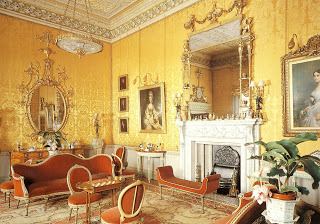
The Cinnamon Drawing Room (below), somewhat changed from Adam's day, also contains Chippendale furniture. As in most Adam rooms, the elaborate ceiling patterns are reflected in the carpets.
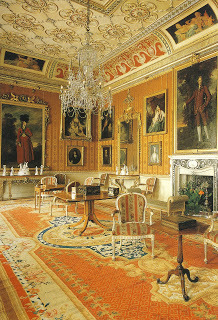
The Music Room (below) shows even more this reflection of the ceiling in the carpets. It is said to be the least changed of the main rooms from the designs of Adam. As in all of the formal rooms, it is filled with priceless paintings and portraits, collections of porcelain and sculpture.
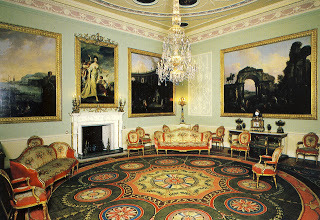
The Gallery (below), extending along one end of the house, is more than 76 feet long. Its colors -- mainly crimson and ivory -- add to the elegant ambiance.
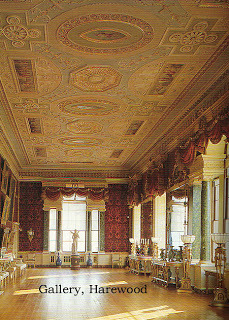
Among the fascinating features in the gallery are the pelmets above the windows, appearing to be velvety draperies drawn up. However, they are actually carved wood, created by Chippendale. If you are in on the joke, perhaps you will be able to tell the difference, but to my eye, they were perfectly faux (is that an oxymoron?)
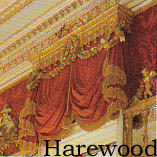
The late 7th Earl of Harewood not only created a great house to visit for its historic collections. He added many pieces of modern art to the family's collections. One of them particularly relates to the restoration of the Adam designs throughout the rooms (thus removing many of the Victorian alterations, thank heavens!). Below, the sculpture of Adam -- the original, that is -- by Sir Jacob Epstein (1880-1959), dating from 1938-39.
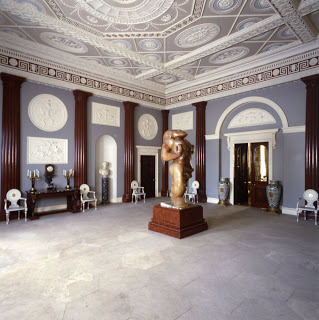
The juxtaposition of the striking modern sculpture underneath Robert Adam's elaborate ceiling is a provocative statement by the late earl. Few country house proprietors have had such ideas -- or perhaps such chutzpah.
While I never get my fill of the lovely rooms of these great treasure houses, I have to recommend a visit the bird house as well. Harewood has a fine collection, not only for display but for research and protection of species. Below is a crowned crane, pretty exotic for Yorkshire.

I hope this little account, a mere fraction of what Harewood has to offer, has whetted your appetite for a day there, well worth the trip. It certainly has inspired me to add a return visit to my list.
Published on November 18, 2011 02:00
Kristine Hughes's Blog
- Kristine Hughes's profile
- 6 followers
Kristine Hughes isn't a Goodreads Author
(yet),
but they
do have a blog,
so here are some recent posts imported from
their feed.



